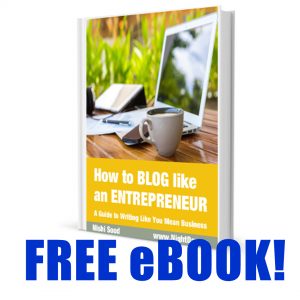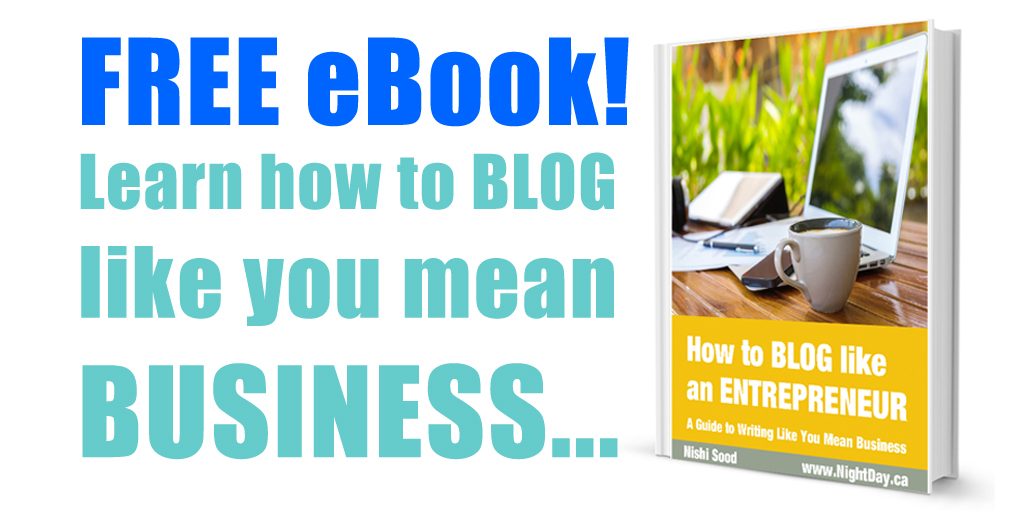How To Use LinkedIn Like A Business Owner
LinkedIn’s primary function is as a networking platform for job-seekers.
So, you might make the mistake thinking that it holds little-to-no relevance for business owners like you and me.
The thing is, entrepreneurs need to network, too.
In fact, if you want to grow your business, one of the best things you can do is fine-tune and expand your network.
LinkedIn is an opportunity for business owners to see AND be seen.
This social media platform allows you to reach out to business referral partners, suppliers, coaches, and potential clients.
It also allows you to be discovered by all of the above.
In either case, you need to make sure your LinkedIn profile is on point.
And, that means you want to look like a business, not an employee.
Here are just a few ways to make your business stand out on LinkedIn…
1. Post blog content in LinkedIn
 LinkedIn has a built-in feature that you can use to post original articles.
LinkedIn has a built-in feature that you can use to post original articles.
It’s essentially like having a blog within LinkedIn.
For FREE.
LinkedIn allows you to incorporate hyperlinks, images, and even videos into your articles, so you have an opportunity to create some truly valuable content for your target audience.
When you publish, these posts show up in your stream and on your followers’ feeds.
These articles also show up as archives in your LinkedIn Profile.
Posting articles on LinkedIn not only bulks up your profile, but it is a great way to build credibility as an expert in your industry.
In your LinkedIn articles, you can give advice to your target audience, comment on industry trends, or review new products.
Then, your followers can like, comment, or share your articles. These posts are an opportunity to engage with your audience.
Engagement will help your message and brand spread further, and get you more followers and connections on LinkedIn.
More followers and connections means more people potentially interested in you and your business.
2. Post native videos
Speaking of engagement, video is more engaging and converts better than written content, so as a business owner, you need to incorporate video content in your LinkedIn strategy.
LinkedIn was the last of the Big 5 social media platforms to adopt native video.
It’s still lagging behind other social media platforms (such as Facebook) in terms of features, but it’s still a powerful perk.
Native video is video that is uploaded directly to the LinkedIn platform, as opposed to sharing a link to another platform (such as YouTube) where the video is hosted.
Because native videos encourage use of their host platform, the LinkedIn algorithm favors native video over shared video.
In other words, if you are posting video content on LinkedIn, you will get more visibility by posting natively, as opposed to posting via a third party link.
LinkedIn allows you to upload videos that are up to 10 minutes long. However, it’s worth noting that statistically, most audiences stop watching after 90 seconds.
In any case, LinkedIn native video is a great way to build rapport and grow your target audience.
3. Use keywords in your headline and summary
Your LinkedIn headline is the text that appears under your name whenever you appear on LinkedIn.
It is important that you use this valuable (but limited) space.
Over the years, many experts have shared their opinions on how best to use this space.
Some say to stand out with a clever slogan or cute joke.
Others say to use this space to describe your vision or mission in one succinct phrase.
But, the best way to use this space on LinkedIn is rather straightforward and boring.
Fill your headline with keywords that describe what it is you do, so that your target audience can easily find you.
Put yourself in the shoes of your target audience and use the words and phrases that they would use when they are using the search tool on LinkedIn.
It is not specific enough if you use the words “entrepreneur”, “freelance”, or “business owner”. Those words could describe anybody. Use keywords that are specific to what it is that you do.
You can be colorful and cute if you want to be, especially if that’s part of your branding, but be mindful.
For instance, no one searches for a “Ninja” or “Guru” or “Jedi” – so in the interests of coming up high in LinkedIn searches, you might be better off sticking to the boring words and phrases that people use when they are looking for you.
If your product or service is location-specific, include the city or town that you serve in your headline.
You can expand on this in your profile summary. Remember, you are using this space to reflect your business, so your summary will be different than that of someone seeking employment.
In this section, focus on who you can help and what solutions you have for them.
In a way, this section is actually more about your target audience than it is about you.
4. Feature a lead magnet
Just as with any social media platform, you get more interest, followers, and engagement if you have something valuable to offer.
A great way to add value to your target audience on LinkedIn is to feature a lead magnet, such as a downloadable e-book (in exchange for an email address).
You can be strategic with your LinkedIn summary and offer your lead magnet there.
You can also create a background/banner graphic for your profile that advertises your lead magnet.
And, you can include calls-to-action to download your lead magnet within your LinkedIn article posts, and various other content posts.
Having a lead magnet is a great way to offer value and grow your email audience so that you can further engage your audience on and off of LinkedIn.
5. Keep your education and prior job experience relevant
Naturally, LinkedIn offers a huge space to outline all your education, job experience, and achievements.
However, never forget that you are on LinkedIn representing your business.
You’re not looking for a job.
Cluttering your profile with superfluous information is not going to help you close sales.
Everything in your profile needs to be very relevant to your business.
Remember, people on LinkedIn just scan this part of your profile very quickly, so the stuff that’s in there had better be very meaningful to them.
It is best to have a minimalistic approach.
Get rid of everything that doesn’t help you build your business.
Scrutinize all those past jobs you’ve had, all those awards you’ve won, and all those degrees you’ve earned… and only keep the ones that matter.
6. Get lots of LinkedIn testimonials (not endorsements)
Testimonials are a very convincing way to convert leads into customers.
And, LinkedIn has a beautiful testimonials feature that makes it easy to ask for and give testimonials to the people you connect with.
Sharing your satisfied clients’ stories about how you identified their struggles and frustrations and was able to solve their problems is way more convincing than any sales pitch.
Your potential clients will see themselves in the people giving the testimonials, and they will feel like you can understand them and help them with your product or services.
Reading the testimonials of real people humanizes your business and shows how it makes a positive impact in the real world.
Notice, I am NOT referring to the LinkedIn endorsements feature. I am referring to the testimonials feature, where your connections can write in detail about why you are a good person to do business with.
These testimonials are a great way to bulk up your LinkedIn profile.
Again, just as with your job experience, education, and other achievements, your testimonials should be tailored to reflect your ideal client and target audience.
Your business may have changed over the years, and your clientele might have evolved as well. Make sure your testimonials are relevant to the target audience that you are trying to engage at this point in time.
LinkedIn is widely known as a social media platform for job-seekers, as opposed to business owners. However, an entrepreneur can benefit from this networking platform, provided they take some steps to represent themselves as businesses and not potential employees. Use LinkedIn’s article publishing feature to position yourself as a credible industry expert. Post native videos to expand your reach and improve engagement. Use keywords in your LinkedIn headline and summary. Feature a lead magnet throughout your LinkedIn profile. Keep your job experience, education, and other achievements relevant to your target audience, who want to see you as a business and not an employee. Bulk up your LinkedIn presence with powerful testimonials that are tailored to convert.
If you’re ready to take your business blog to the next level, check out my FREE eBook, “How To Blog Like An Entrepreneur” here…
